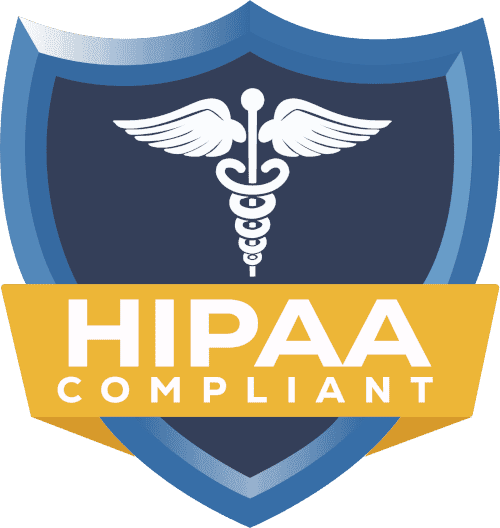What Is Credentialing in Health Insurance: Understanding the Essential Process for Providers

In today’s complex healthcare landscape, the relationship between providers and insurance companies hinges on a critical administrative function: credentialing. This process serves as the gateway for healthcare providers to participate in insurance networks and receive reimbursement for their services. Let’s explore what credentialing in health insurance value added services involves and why it matters for providers and patients alike.
Defining Credentialing in Health Insurance
Credentialing in health insurance is the thorough verification process through which insurance companies evaluate and validate a healthcare provider’s qualifications, experience, and professional background before allowing them to join their provider networks. This comprehensive verification ensures providers meet specific standards necessary to deliver quality care to insured patients.
The process typically verifies:
- Education and training
- Current licensure
- Board certifications
- Work history
- Malpractice insurance coverage
- Hospital privileges
- References
- Professional standing
- Background checks
While often viewed as administrative paperwork, credentialing serves as a crucial quality assurance mechanism that protects patients, providers, and insurance companies alike.
The Provider Credentialing Process: Key Steps
Understanding the typical sequence of events in the provider credentialing process helps set realistic expectations for completion:
1. Preparation Phase
- Gathering all necessary documentation
- Obtaining appropriate liability insurance coverage
- Identifying target insurance networks
- Researching payer-specific requirements
2. CAQH ProView Profile
Many providers begin by completing a Council for Affordable Quality Healthcare (CAQH) ProView profile, which serves as a centralized database for credential information used by many insurance companies.
3. Application Submission
- Completing payer-specific applications
- Submitting supporting documentation
- Tracking submission dates and confirmation numbers
- Establishing follow-up schedules
4. Primary Source Verification
Insurance companies verify provider information directly with the original sources:
- Medical schools and training programs
- Licensing boards
- Certification bodies
- Previous employers
- Hospitals
5. Credentialing Committee Review
Many insurers have credentialing committees that review applications and make approval decisions based on company standards and network needs.
6. Contracting and Enrollment
Upon approval, providers receive contracts outlining payment rates, terms, and conditions for network participation.
7. Provider Enrollment and Credentialing Completion
After contract execution, providers complete the enrollment process, receiving:
- Effective dates for billing
- Provider identification numbers
- Billing guidelines and requirements
Provider Enrollment and Credentialing: Understanding the Distinction
While often used interchangeably, provider enrollment and credentialing represent different aspects of the same process:
Credentialing
- Focuses on the verification of qualifications and background
- Determines if a provider meets quality standards
- Relates primarily to professional qualifications
Provider Enrollment
- Focuses on the administrative setup in payer systems
- Establishes billing mechanisms and identifiers
- Relates primarily to business relationships
- Typically follows successful credentialing
Think of credentialing as the qualification verification and enrollment as the administrative activation that allows you to begin billing the insurance company.
The Health Insurance Credentialing Process Timeline
One of the most common questions about credentialing is how long it takes. While timelines vary by payer, the process typically follows these general parameters:
- CAQH profile completion: 1-3 hours
- Application preparation: 2-4 hours per payer
- Primary source verification: 30-90 days
- Committee review: 15-45 days
- Contracting: 15-30 days
- Final enrollment: 7-14 days
In total, the health insurance credentialing service process typically takes 90-180 days from submission to approval, assuming no complications arise. This timeline underscores the importance of starting the process well before you plan to begin seeing patients with a particular insurance.
Why the Credentialing Process Matters
The importance of proper credentialing extends to every stakeholder in the healthcare system:
For Providers
- Enables in-network reimbursement
- Expands potential patient base
- Establishes professional credibility
- Creates predictable revenue streams
- Reduces patient billing complications
For Patients
- Ensures care from qualified providers
- Reduces out-of-pocket expenses
- Simplifies billing processes
- Expands provider choice within networks
- Enhances confidence in provider quality
For Insurance Companies
- Ensures network quality standards
- Reduces liability risks
- Fulfills regulatory obligations
- Maintains network integrity
- Protects member safety
Common Challenges in Provider Credentialing
Several obstacles frequently arise during the credentialing process:
Timeline Delays
The process often takes longer than anticipated, particularly if applications are incomplete or verification issues arise.
Documentation Gaps
Missing or inconsistent information frequently delays applications, making organizational preparation crucial.
Payer-Specific Requirements
Each insurance company has unique application forms, verification processes, and network criteria.
Communication Limitations
Insurance companies often provide limited status updates, requiring persistent follow-up from providers.
Changing Standards
Credentialing requirements evolve over time, necessitating current knowledge of payer expectations.
Best Practices for Successful Credentialing
To navigate the provider credentialing process efficiently:
Start Early
Begin the credentialing process 4-6 months before your anticipated start date with a new insurance company.
Be Thorough and Accurate
Complete all applications fully and accurately. Even minor discrepancies can cause significant delays.
Create a Tracking System
Develop a spreadsheet or use credentialing software to monitor application status and follow-up deadlines.
Follow Up Consistently
Regular, polite follow-up with insurance companies keeps your applications moving forward.
Consider Professional Help
Many providers find value in credentialing specialists who understand payer-specific nuances and maintain relationships with key contacts.
Conclusion
While the health insurance credentialing process can seem daunting, understanding its purpose and approaching it strategically helps ensure successful outcomes. This essential administrative function serves as the foundation for provider-payer relationships, enabling appropriate reimbursement while maintaining quality standards across the healthcare system.
Whether you manage credentialing internally or with professional assistance, recognizing its importance helps frame it as a valuable investment rather than merely administrative paperwork. With proper credentialing in place, providers can focus on their primary mission, delivering quality care to patients, while maintaining the financial health of their practice.



















